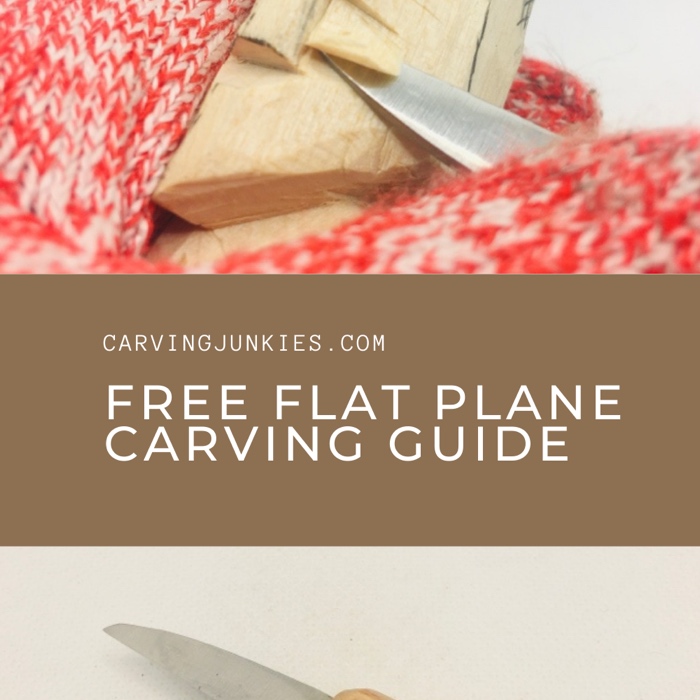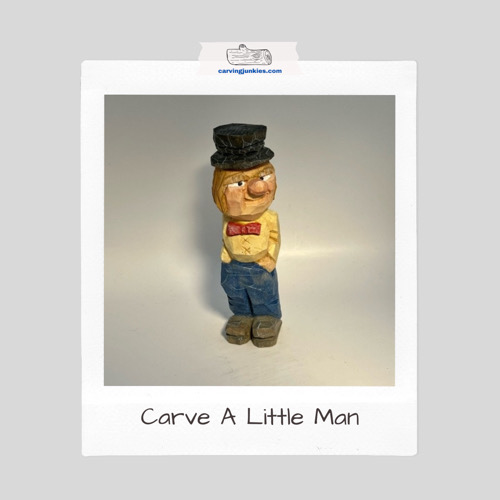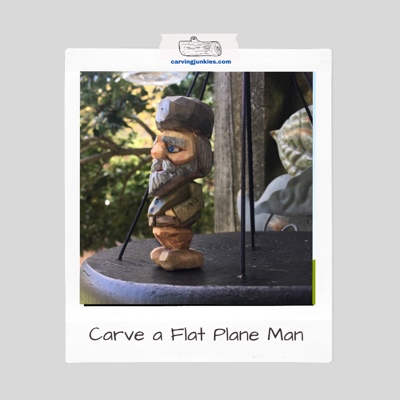- Home
- Flat plane carving
Ultimate flat plane carving guide
With practice, you can master this style of wood carving.
If flat plane carving has caught your interest, you're in the right place.
Not only will you learn about this distinctive style of cutting wood with our essential guide, but you can also try your hand at it with our free tutorials.
What exactly is flat plane carving?
Spirited wood carvers like to emphasize that flat plane carving is a "style" and not a "type" of wood carving. In our book, it's just a really cool way to carve, once you get the hang of it.
The hallmarks of flat plane wood carving include:
- Cuts that create large flat planes on the wood, traditionally using only a knife.
- Very little rounding of the wood (or none at all).
- No sanding of the wood so you can proudly display your knife/tool marks.
Some refer to flat plane carving as a minimalist style of wood carving. Less is definitely more, however, when it comes to flat plane carving.
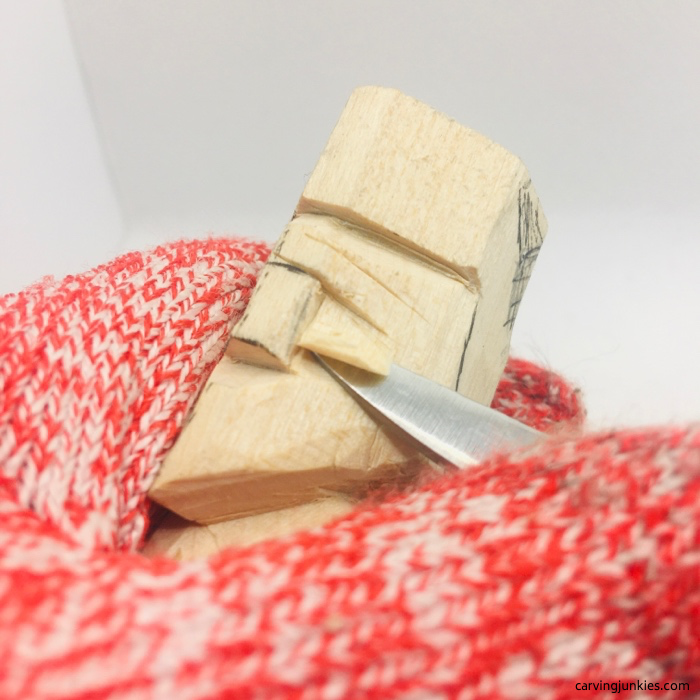 Flat plane cuts are more angled than rounded
Flat plane cuts are more angled than roundedBrief history of flat plane carving
Flat plane carving is said to have originated in Scandinavian countries. Modern-day wood carvers, including Harley Refsal, have been credited with bringing this distinctive, old-world style back to life.
Refsal includes a historical overview of Scandinavian-style flat plane carving in Norway and Sweden in his books on the subject. He attributes the growth of flat plane carving to the fact that knives went from being hand made by blacksmiths to large-scale manufacturing, which made them more affordable for more people.
In a recent International Association of Woodcarvers podcast, modern-day flat plane carver James Ray Miller attributes the popularity of this style to the rise of the potato. He says that people no longer had to work the fields all the time, giving them more free time to enjoy this wonderful hobby.
As a result of other manufacturing processes, it seems likely that early flat plane carvers transitioned from making practical items (such as spoons and knives) to more creative endeavors, such as characters and toys.
Do all flat plane carvings look alike?
In a word, no. The early Scandinavian carvers often created flat plane trolls, nisses, tompte (or tompten) and brownies, which look a bit like the wood-carved gnomes we see today. They also featured working village folk.
We cannot post pictures owned by others, but if you click on the names of the master flat plane carvers below, you will see how each has made the style his own over a hundred years or so:
- Axel Petersson Doderhultarn (Swedish, 1868-1925): his style is rough and crude and might not win any awards today, but it incorporates fabulous movement.
- Emil Janel (Swedish, 1897-1981): made humorous carvings with great energy. In his own words, he called his style"exaggerated realism," which probably inspired modern-day caricature carving. It is said that he kept his carvings in buckets of water to keep them wet while carving, which probably made the wood softer to carve.
- Carl Olaff Trygg (Swedish, 1910-1993): He came from a prolific family of flat plane carvers and used colorful paints and favored plaid designs for the clothing on his works.
- Harly Refsal (American of Norwegian descent, alive today): Is often credited for modernizing flat plane carving and generating renewed interest in the last decade or so. His carvings are bright and adorable, often with sheepish grins and silly noses.
- Urban Gunnarsson (Swedish, alive today): son of Sven, another flat plane carver, who created carvings of politicians and celebrities (such as Billy Graham, Winston Churchill, and Charlie Chaplain) and sea captains, golfers, hunters, Vikings, and more.
Why we love flat plane carving
If you think flat plane carving is simple, it is. But simple doesn't always equate with easy.
The goal is to create a carving using a minimum of large cuts that are super clean. That is a real challenge!
Unless you are already an accomplished carver, you will probably have to make more shorter cuts when you start flat plane carving.
Over time, and with practice, you will learn how to get the results you want with fewer cuts.
If you stick with it, flat plane carving is a wonderful journey with unlimited possibilities. We're excited to use our imagination to create more modern flat plane carvings and will be learning and practicing along with you.
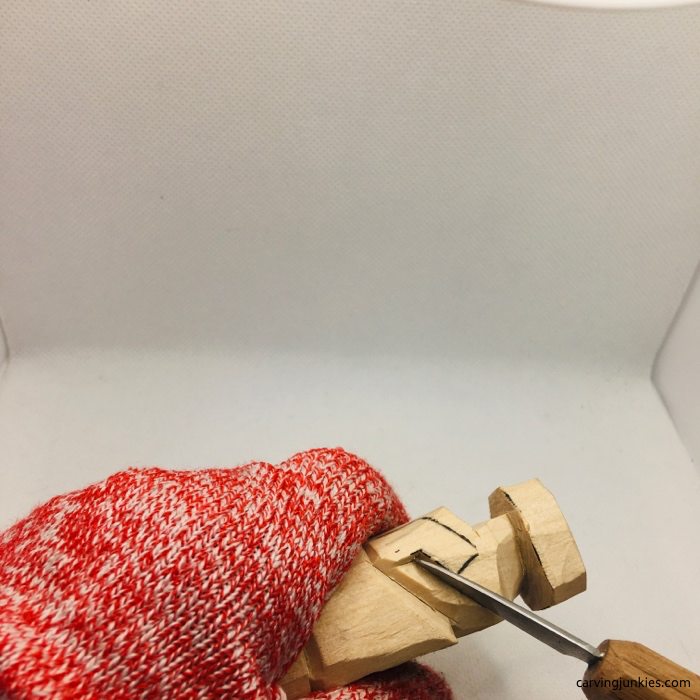 Arms are more angular than rounded
Arms are more angular than roundedWhat is the best knife for flat plane carving?
We recommend using a fixed blade, straight-edged knife for flat plane carving.
When we were first learning how to wood carve, we ruined a good OCC Tools straight-edged knife because it is not meant to have any flex or bend.
We thought it was a crummy knife, but it's actually fabulous when you use it correctly. Duh.
As a side note, we have found the OCC Tools straight-edge knife also results in less wood crumbling on the small basswood blocks we like to use for designing our tutorials.
While we love our Mora knives for bushcrafting, you will find them to be too thick for easy flat plane carving.
What about a pocket knife? If you are an advanced carver, we believe you can probably make any good knife work for you.
But we think you will have greater control, and be able to make cleaner cuts, with a fixed blade.
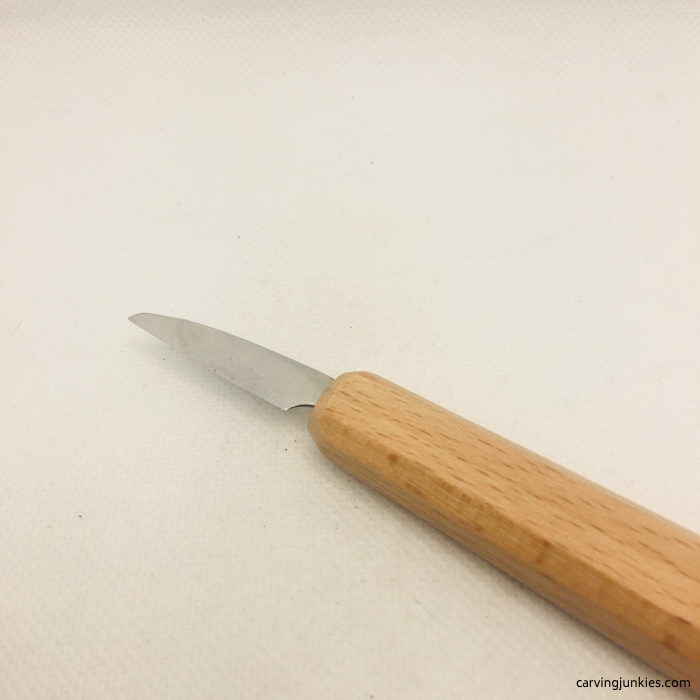 Straight-edged carving knife
Straight-edged carving knife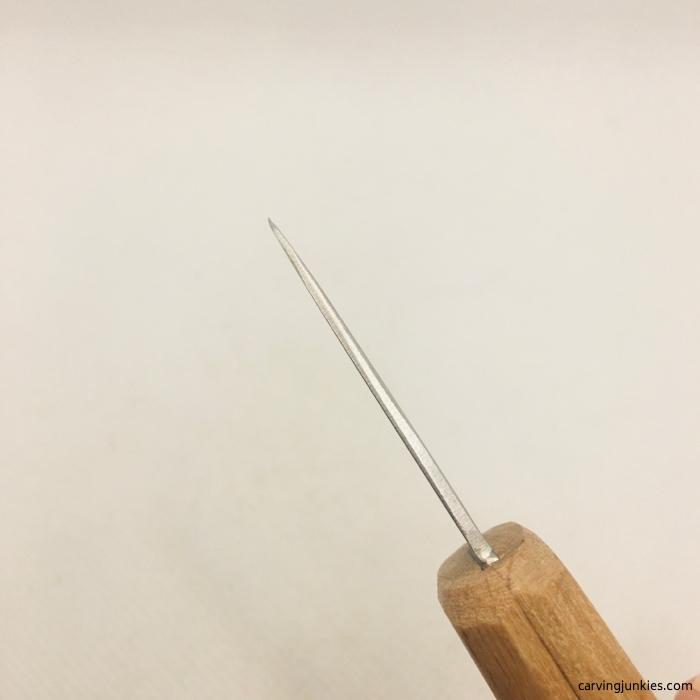 Top view of straight-edged carving knife
Top view of straight-edged carving knifeAlways use gloves for safety when you carve.
What about gouges and other tools with flat plane carving?
Personally, we love the simplicity—and the challenge—of only using a knife. However, there are no flat plane police that will arrest you if you use other tools.
Refsal writes that he uses gouges (and his patterns often require a band saw or a scroll saw).
Again, we love keeping things simple, and the creative journey when you start with the blank slate of a basswood block.
It is more work for sure, but there is something meditative and relaxing about removing excess wood with a knife.
Since not everyone owns a band saw, we have designed our tutorials to be inclusive for all carvers.
You can use any of our free patterns with a band saw, if you prefer.
Can you use wood other than basswood for flat plane carving?
Go for it! Just bear in mind that basswood is generally soft to carve, holds detail well, and is easy to paint.
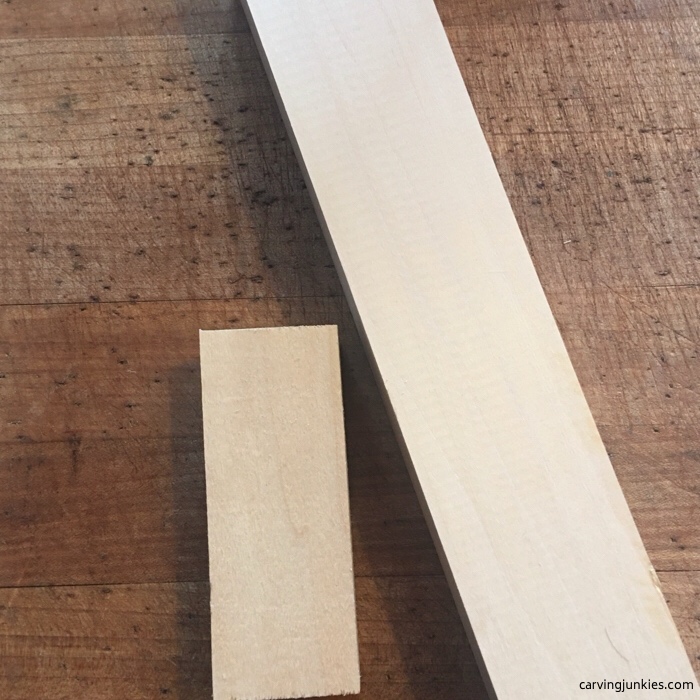 Basswood is great for flat plane carving
Basswood is great for flat plane carvingAre there any rules of thumb for flat plane wood carving?
Yes! First and foremost, enjoy the flat plane carving process. You will also want to:
- Strop your knife every half hour to keep it sharp to make clean cuts. Stringy wood is like eating potato chips... one string turns into many strings pretty quickly. It’s frustrating when that happens.
- It may be easier to carve the areas of the body first (head, legs, hair or hat, arms, hands, etc.) before you start the details to be sure everything is aligned.
We often like to save the face until the body takes shape, but that's our process. Take what you like from our tutorials and leave the rest.
The joy of flat plane carving is discovering what works best for you.
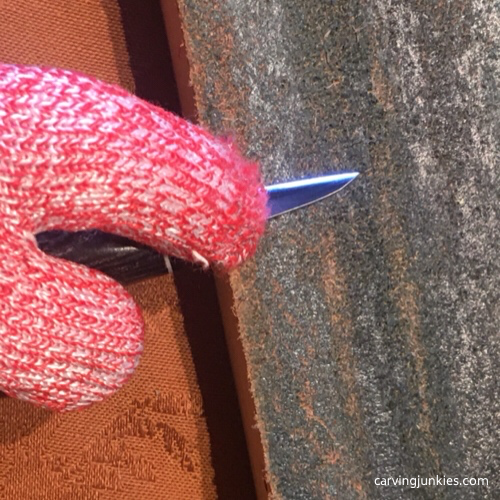 Strop your knife regularly to keep it sharp
Strop your knife regularly to keep it sharpBe open to a change in direction
Sometimes the best plans for a flat plane carving pattern get turned upside down, due to a mistake, or perhaps a change in your perspective.
Our philosophy is:
- Mistakes are just wood carving growth opportunities that can make you a better carver. Painter Bob Ross called them happy accidents, and we like to think of them as magical mistakes that are supposed to happen.
- Don't get too hung up if your design doesn't look like the image that you started with. Just go with it and see where it takes you.
- Let the wood dictate your direction. Often it's the wood that decides what the carving will be, but only if you allow that to happen.
Our flat plane carving tutorial evolved from an idea that was completely different. That happens a lot in our house.
Don't rush your flat plane wood carving
We find that flat plane wood carving requires a little more deliberation to determine how to get the desired result with the least amount of cuts.
The old adage for general woodworking also applies here: measure twice and cut once.
Do I need to paint a flat plane carving differently?
No. You can use the same painting techniques we use for other styles of wood carving with flat plane carving. You can also experiment with different finishes, too.
We just tried applying Minwax natural wood stain prior to painting, and are really happy with the results. It gives you a nice, natural flesh tone color for faces and hands.
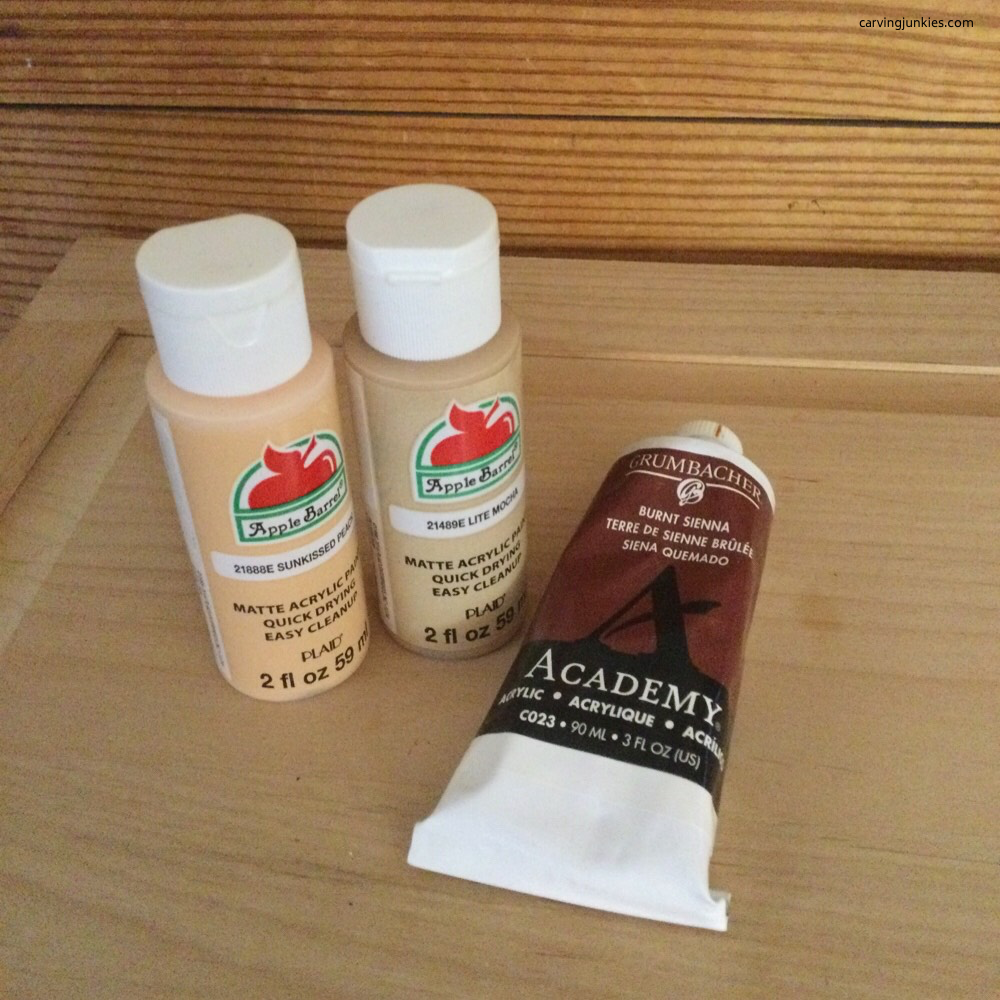 You can use acrylic paint
You can use acrylic paintCheck out our flat plane wood carving tutorials (below).
Summary of our flat plane wood carving guide
- Flat plane wood carving is another style of carving that you can use for creating caricatures, animals, and more realistic carvings.
- We recommend using a fixed blade that has a straight edge.
- Like any other style of wood carving, the more you practice the better your flat plane carvings will be.
Sources/resources:
- Carving Flat-Plane Caricatures by Harley Refsal.
- Scandinavian Flat-Plane Carving; Axel Petersson Döderhultarn; Wikipedia.
- Urban Gunnarsson, American Swedish Institute.
Get 50 Wood Carving & Painting Tips when you join our FREE Covered in Chips club.
Share this page
carvingjunkies.com never sells your personal information.
This site uses cookies for its operation and to enhance your experience. As an Amazon Associate and Focuser Carving affiliate we earn from qualifying purchases.
Home | About Us | Privacy Policy | Terms of Use | Contact | Sitemap
